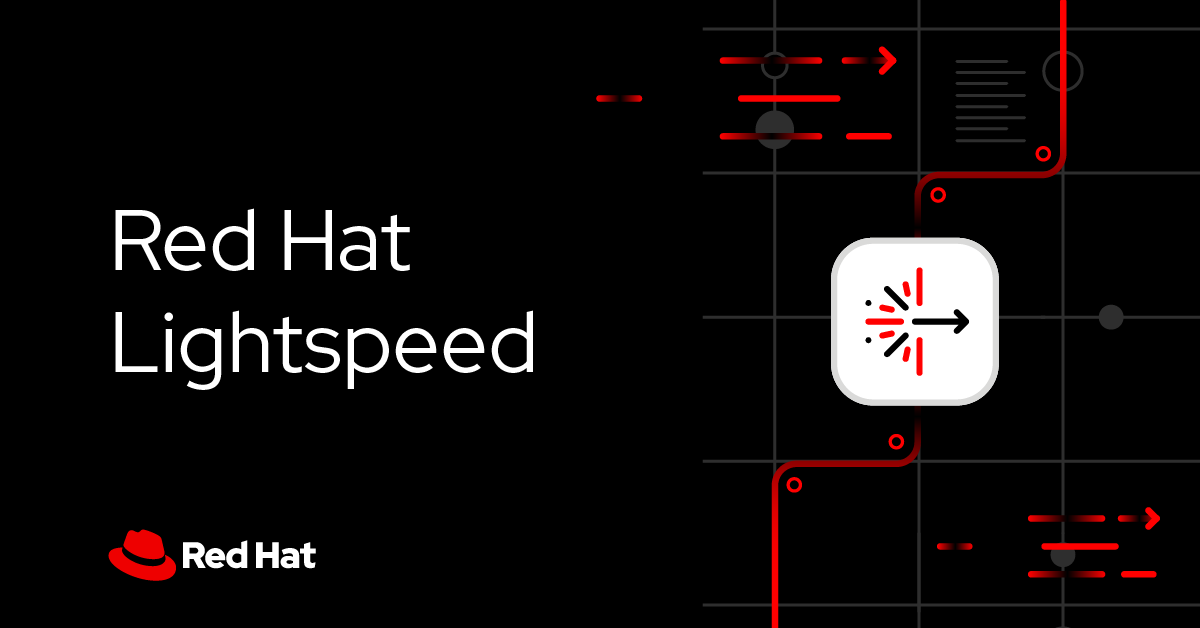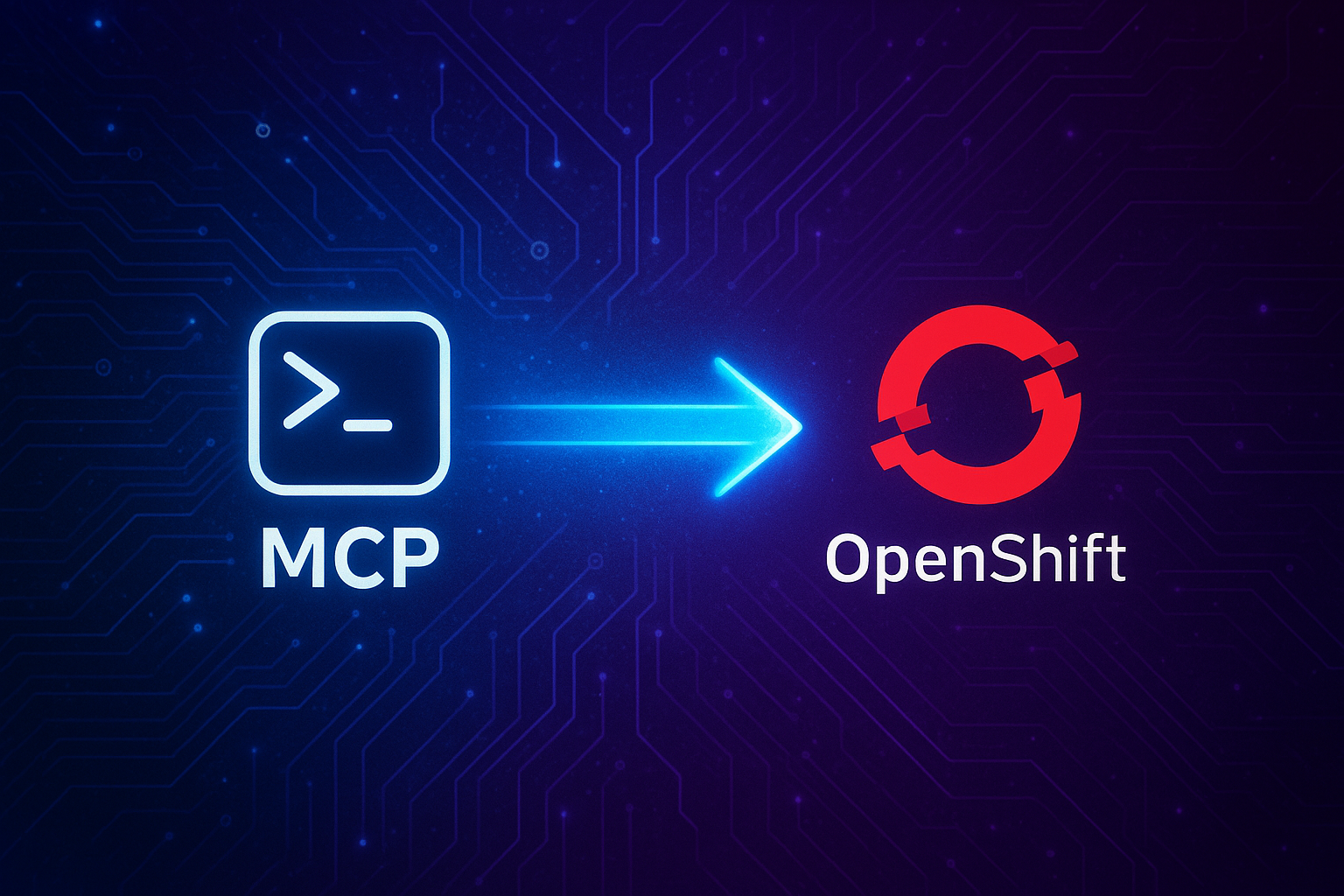From KubeCon to Openshift…
After attending the KubeCon Europe 2025, one major takeaway was clear: AI isn’t just a trend, it’s redefining the future of infrastructure and developer tools
Many sessions focused on how to hide infrastructure complexity through approaches like Platform Engineering and AI-powered developer tools. I came home inspired to test it out myself.
So I built a simple demo: using Claude Desktop, OpenShift, and the Model Context Protocol (MCP) to show how natural language can drive real actions in a live Kubernetes cluster.
And yes — it works. Let me show you how.
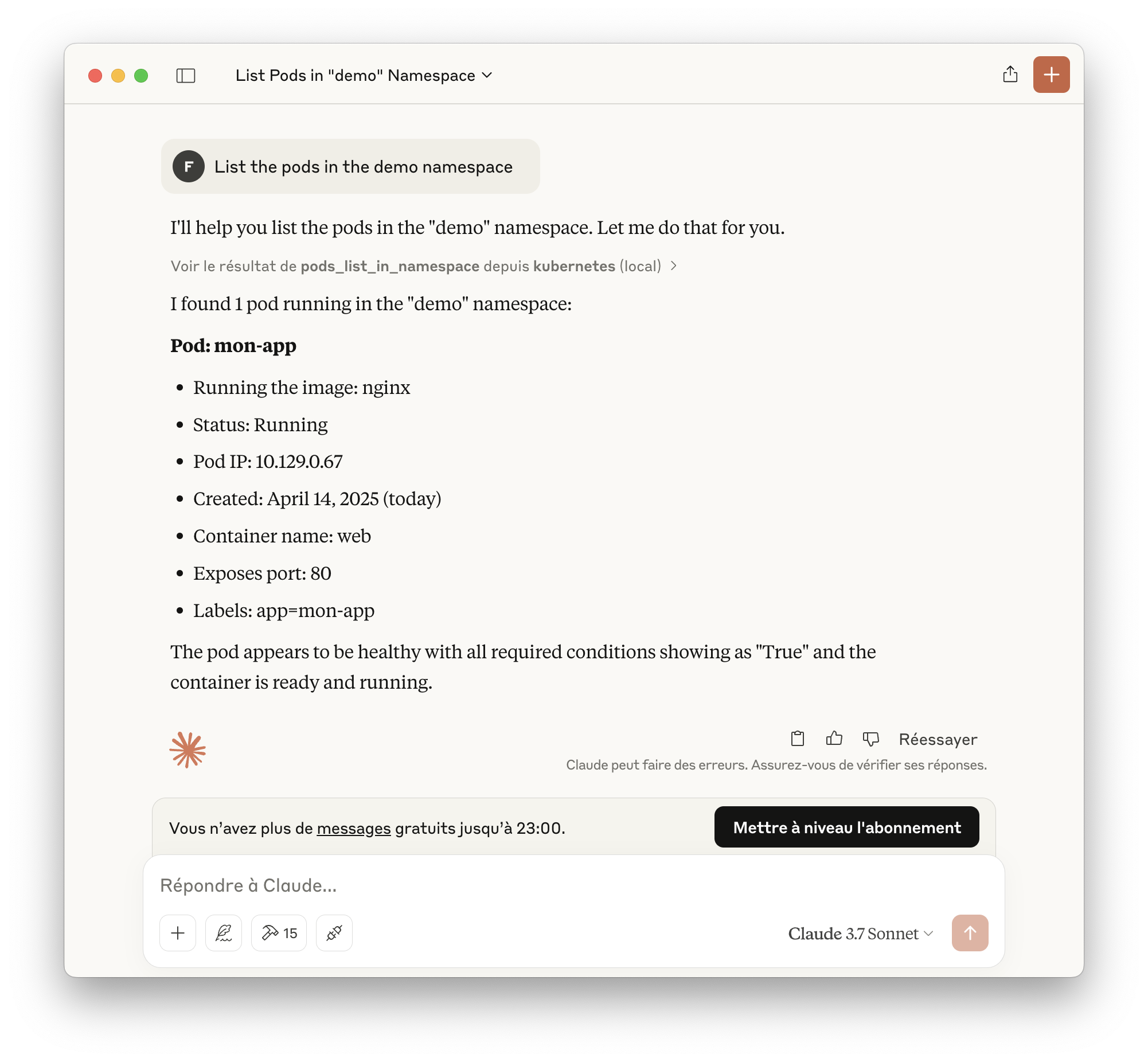
What is MCP – Model Context Protocol?
Connecting AI models to real-world systems like APIs, databases, or Kubernetes is usually complex and requires custom code.
The Model Context Protocol (MCP), created by Anthropic, is an open standard that makes this much easier.
It allows AI models (like Claude) to understand the context and safely perform actions by talking to small programs called MCP servers.
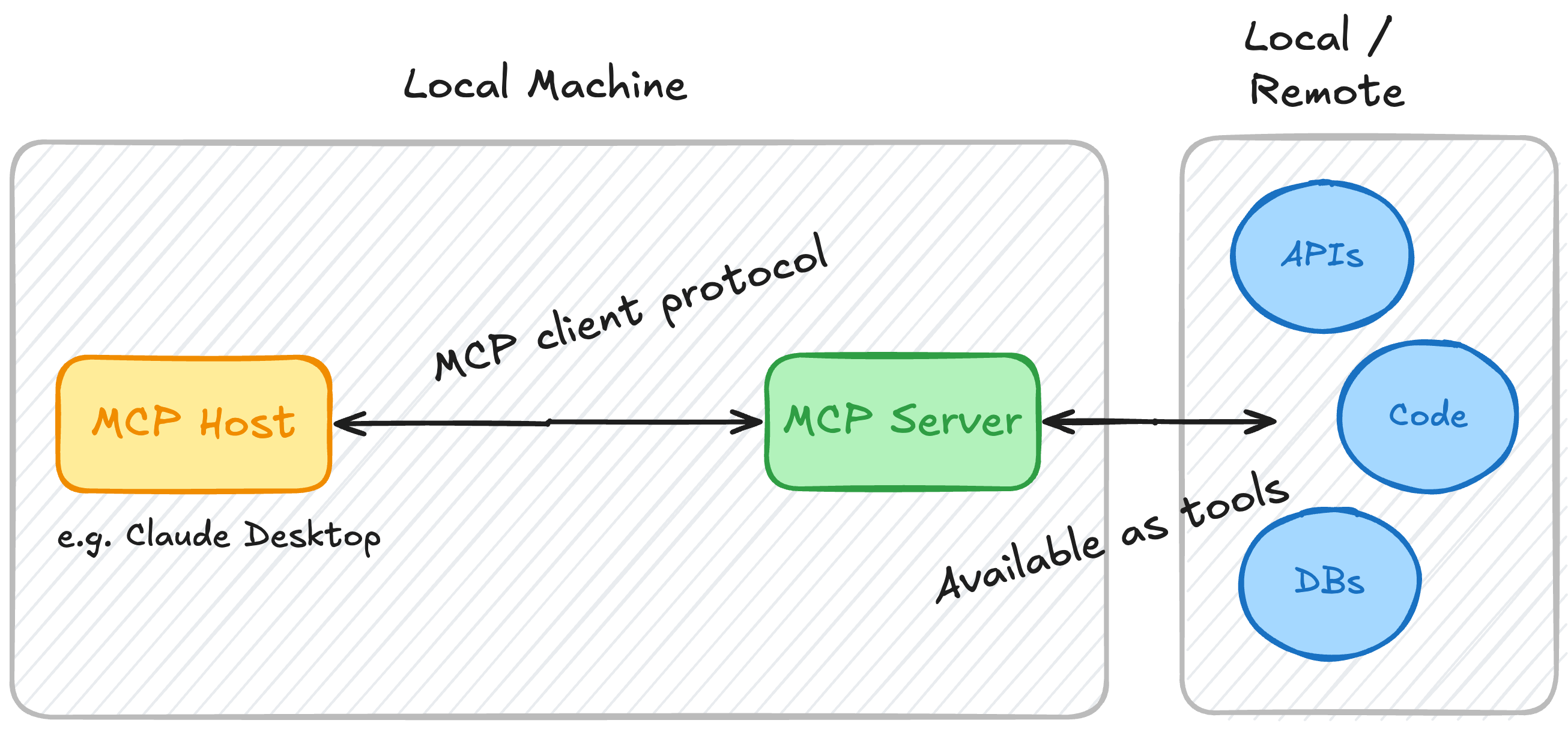
A Kubernetes MCP Server, Built by Marc Nuri
My colleague Marc at Red Hat has developed a open-source MCP server implementation:
🔗 kubernetes-mcp-server
This MCP server can:
- Connect to any Kubernetes or OpenShift cluster
- Read and manage pods, namespaces, events, deployments, and more
- Show pod logs, execute commands, and even run containers
- Work seamlessly with Claude Desktop or VS Code
It runs locally with no dependency on kubectl, helm, or other CLI tools — lightweight, flexible, and ready to use.
Live Demo: Claude Diagnoses and Fixes a Broken Pod on OpenShift
Let’s walk through a simple and visual demo you can try today.
We’ll deploy a pod that fails to start (due to a bad image), then use Claude to identify the issue and fix it — using natural language only.
What You Need
- A Mac with Homebrew
- Claude Desktop installed
- A running OpenShift cluster (for example on AWS like me)
- OpenShift CLI (
oc):
brew install openshift-cli
Make sure you can log in to your OpenShift cluster:
oc login <cluster-url> --token=sha256-...
Step 1: Connect Claude to the MCP server
Open this file:
open ~/Library/Application\ Support/Claude\ Desktop/claude_desktop_config.json
And add:
{
"mcpServers": {
"kubernetes": {
"command": "npx",
"args": [
"-y",
"kubernetes-mcp-server@latest"
]
}
}
}
Then restart Claude Desktop and verify that the MCP Server is running.
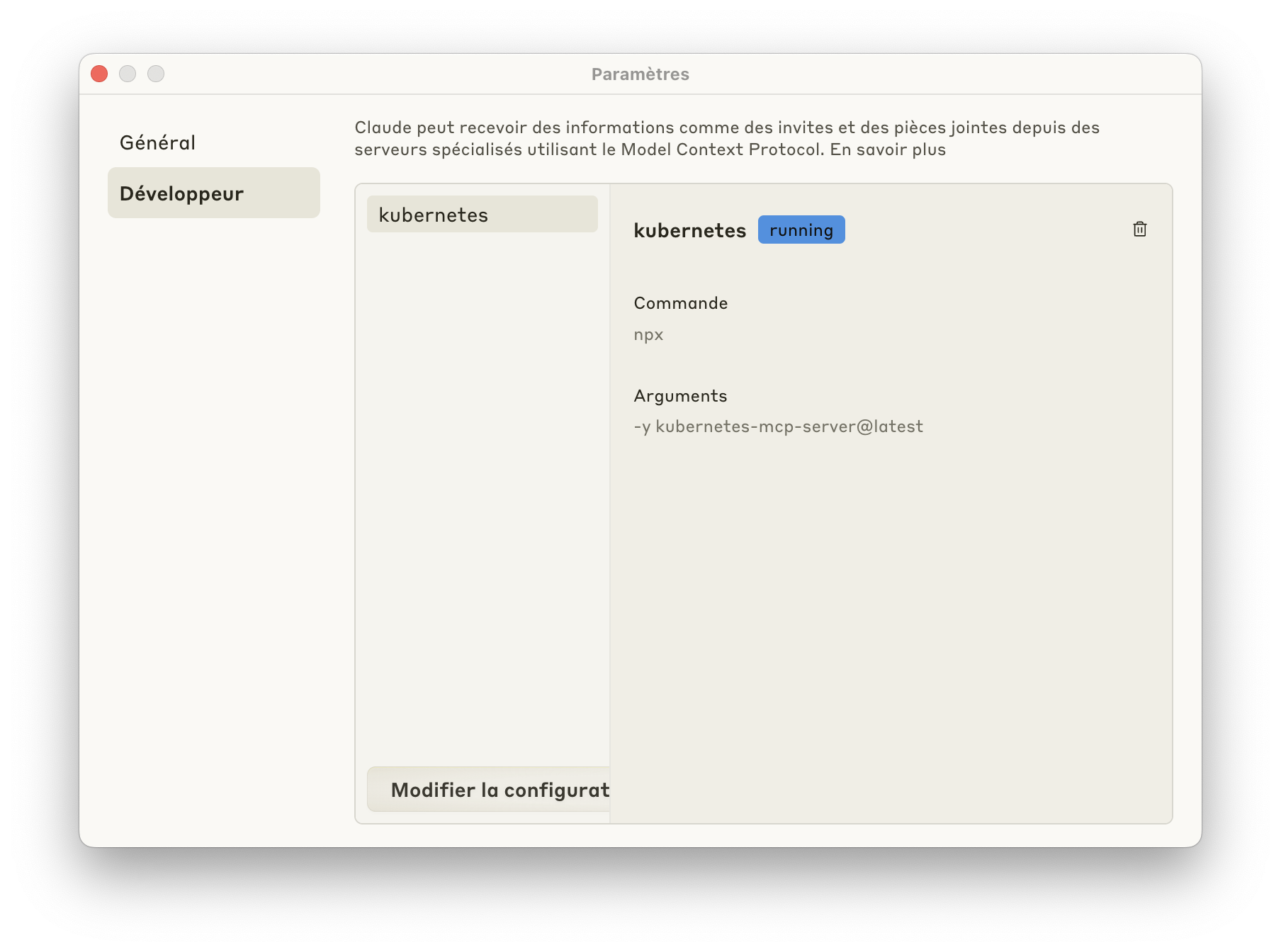
Step 2: Create a Broken Pod
Let’s create a pod in a new namespace, using a non-existent image.
oc create namespace demo
cat <<EOF | oc apply -f -
apiVersion: v1
kind: Pod
metadata:
name: mon-app
namespace: demo
labels:
app: mon-app
spec:
containers:
- name: web
image: nginx:doesnotexist
ports:
- containerPort: 80
EOF
The pod will fail with an ImagePullBackOff error.
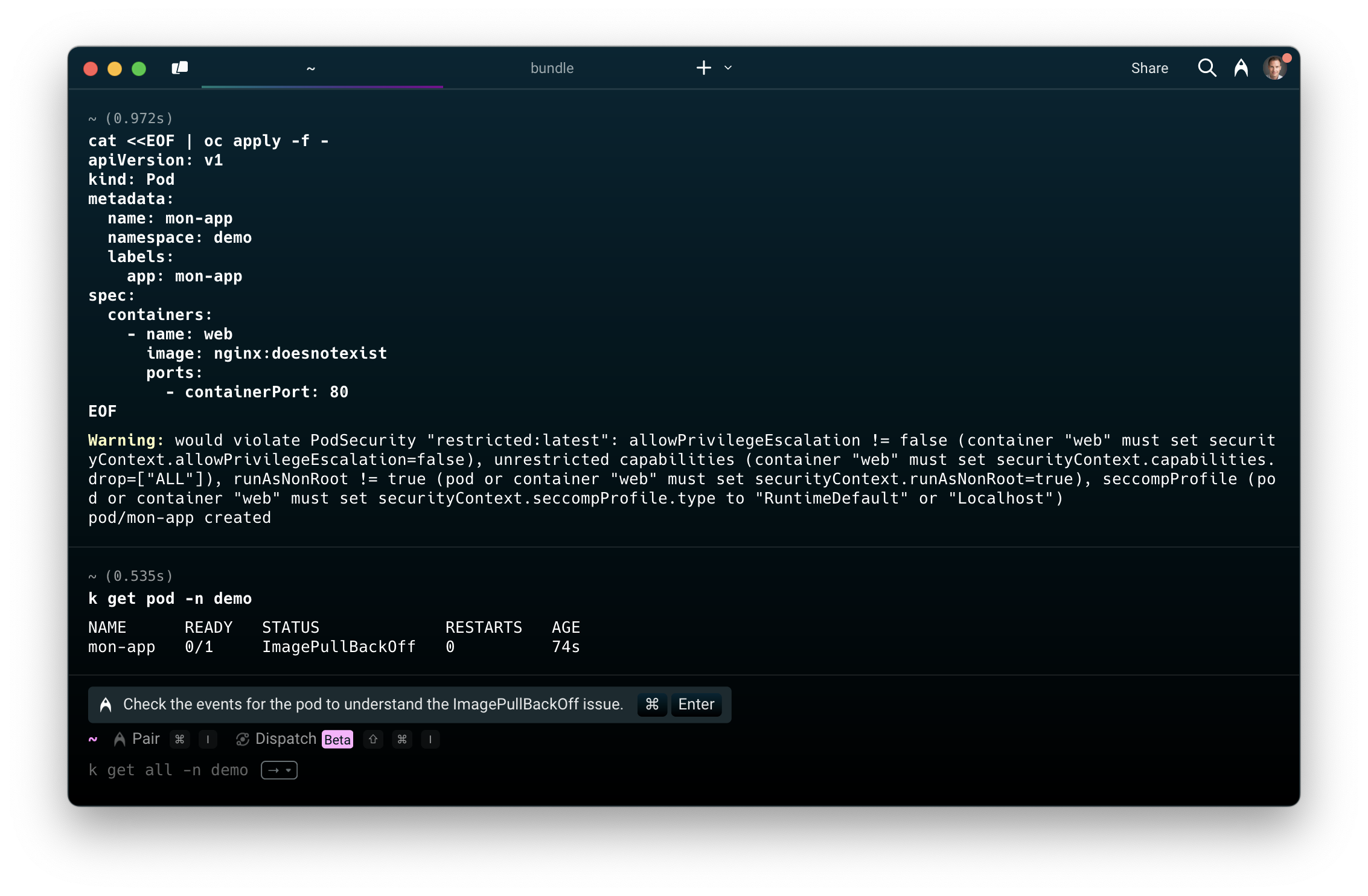
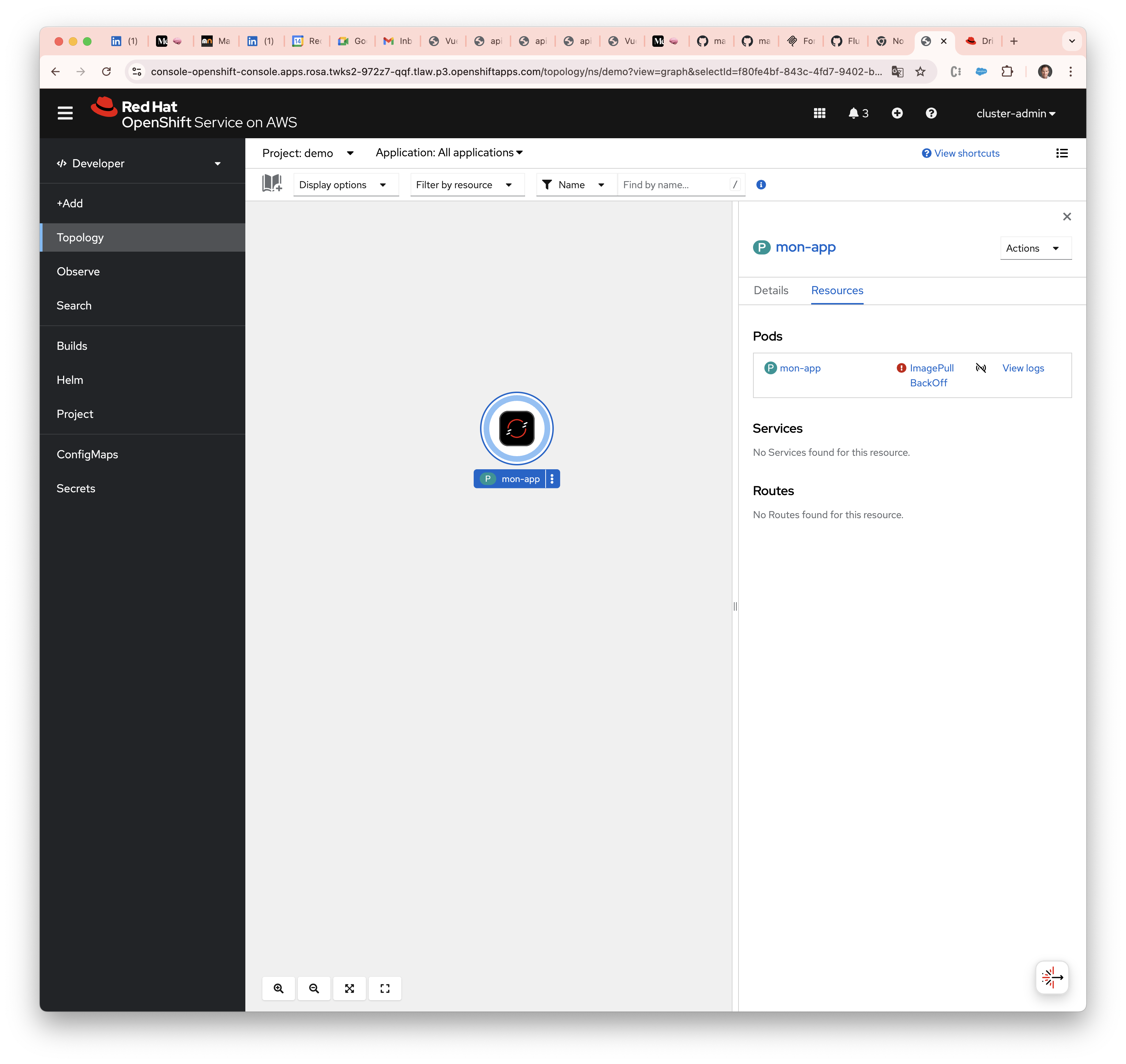
Step 3: Let Claude Fix It
In Claude Desktop, simply type:
Diagnose and fix the pod `mon-app` in the `demo` namespace.
Claude will:
- Inspect the pod and retrieve logs and events
- Detect the image error
- Suggest replacing the image with a working version (
nginx:latest) - Apply the change if you confirm
All this, using natural language and the MCP server — no CLI needed.
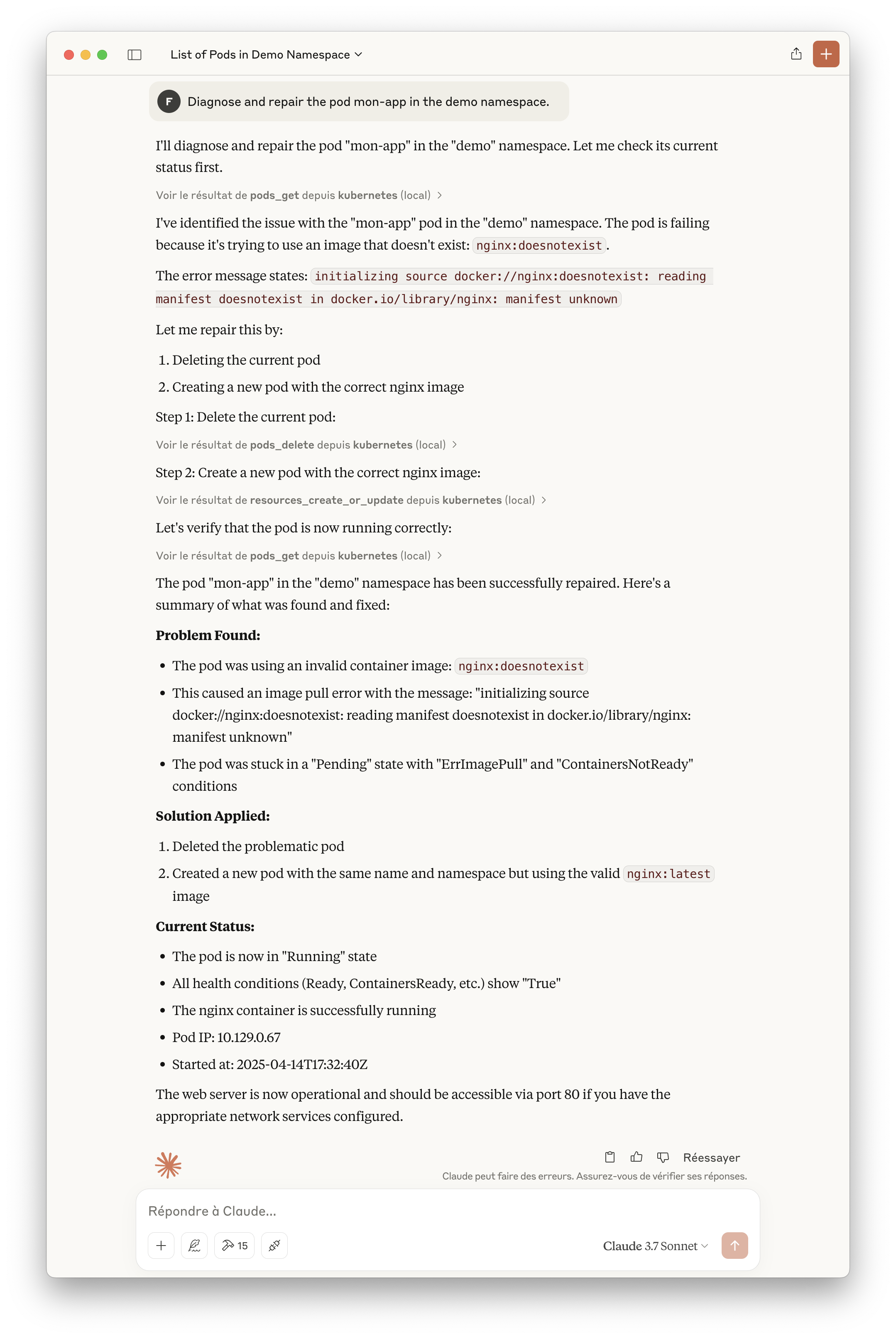
Step 4: Clean Up
Once you’re done:
oc delete namespace demo
Security Considerations
As with any automation that interacts directly with a live Kubernetes cluster, it’s important to apply proper safeguards. While using natural language to drive actions is powerful, it can also introduce risk if commands aren’t well-scoped or validated.
For example (and this actually happened during my testing) the AI confidently suggested pulling an image… and two lines earlier, it quietly picked the latest tag.
Spoiler: that’s rarely what you want in production.

So, always make sure to:
- Validate image tags explicitly (avoid :latest)
- Use admission policies or image scanners when possible
- Limit the scope of actions the assistant is allowed to perform
- Log and monitor AI-triggered activity separately
Natural language makes things easier — let’s make sure it doesn’t also make them riskier.
Bonus: OpenShift Lightspeed ⚡️
Red Hat also offers a built-in AI assistant for OpenShift:
🔗 OpenShift Lightspeed
Lightspeed enables:
- YAML generation and validation with AI
- Built-in troubleshooting suggestions
- Secure, production-ready GenAI workflows — right in the OpenShift web console
If MCP + Claude is the open playground for experimentation, Lightspeed is the enterprise solution, fully integrated and supported.
🧭 What’s Next?
In my next blog post, I’ll dive into OpenShift Lightspeed — how it works, and how it helps DevOps teams.
